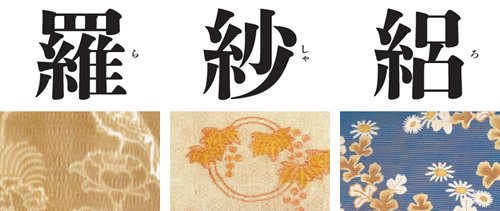niponica is a web magazine that introduces modern Japan to people all over the world.
2013 No.11

To read the e-book you need to have JavaScript enabled in your browser and a free Flash Player plug-in from Adobe Systems Inc. installed.
Japanese Fabrics Have Their Global Reputation Wrapped Up

Dyeing and Weaving
Japan's textile culture—Shaped by a rich array of techniques

From left: A ra weave discovered in a historical city, now an ancient cultural asset: a sha weave in a pattern of grapes, 18th century (both from the Tokyo National Museum collection, image: TNM Image Archives); a ro weave in a sweet chrysanthemum pattern, 19th century (from private collection).
Silk gauze is a transparent open weave fabric created from a complicated intertwining of warp thread. There are three basic styles of gauze weave in Japan: ra, sha, and ro. Known collectively as usumono (literally, thin fabric), silk gauze is thought to have first been worn in the summer by court nobles, samurai and other members of the upper classes in the early 8th century.
Photos by Takahashi Hitomi

Kimono fabric in a ro weave so thin as to be practically transparent (left) and a light and cool obi woven in the crisp, mesh-like ra style (right, created by Kitamura Takeshi). A rich array of weaving techniques developed by master kimono weavers have long kept the Japanese people comfortable during the country's hot and humid summers. (Collaboration: Ginza Motoji)








